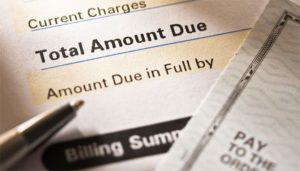In the boat of business, a good cash flow keeps you afloat…
…and a poor one can inescapably sink you.
Many SME owners will resonate with this sentiment. In fact, poor cash flow is one of the biggest reason why one out of four companies doesn’t survive past their first year. And, why nearly half don’t make it past the fifth.
Learn more about cash flow 101.
Understanding and acknowledging some of the major cash flow problems is key to avoiding missteps in the future.
Let me give you a rundown of the top 6 cash flow problems and their potential solutions to better equip you and your business.
1. UNSYSTEMATIC BOOKS
A huge chunk of SME owners put their bookkeeping at the bottom of the pile. Simply because they become so busy with the many hats they have to wear and their workload. Newly set up businesses are particularly susceptible to this.
These distractions are inevitable. But if your books aren’t at least organized, you will get caught up in a vicious cycle sooner rather than later.
Take a look at this example.
Jerry runs a cleaning company. He and his crew are very good at cleaning offices and charge a fair rate. Despite that, he began to fall behind with his bills and received a few late payment notices.
He then asked an accounting office for help. He couldn’t figure out how he was falling behind on his payments regardless of his vigorous work ethics and good rates.
The accounting firm took a closer look at his payment collection methods and invoicing system. Two key issues were identified:
- Inconsistency on when invoices were sent after work was completed.
- Poor records of when customers have already settled the payment.
The root cause of his problems was poor systematization of his bookkeeping. And, this resulted in a significant amount of money that was never invoiced, or invoiced but never followed up on.
Jerry failed to reconcile the overlooked invoices. resulting in a cash flow cycle that had extended out to 75 days, instead of his ideal cycle of just 14 days.
Setting an efficient and robust system in place results in a strong cash flow and on-time bill payments. With this, you’ll be up to speed on which customer owes you and how much.
As an absolute minimum, I recommend to my customers that they create (or get your accountant to set this up for you) a simple, weekly cash flow report. This report should include what money you are needing to spend, and what money you expect to receive in the next two weeks. Plus a list of any overdue by the customers.
2. BAD DEBTS
 Bad debts are Accounts receivable (AR) that can no longer be recovered. Its treated as a loss and can cripple business, especially SMEs. Unfortunately, it can easily occur if there’s no proper credit control system put in place early on.
Bad debts are Accounts receivable (AR) that can no longer be recovered. Its treated as a loss and can cripple business, especially SMEs. Unfortunately, it can easily occur if there’s no proper credit control system put in place early on.
A credit control is a system used by companies to ensure that they give credit only to customers who are able to pay. It’s sensible to put this system in place immediately after starting out.
Keeping your books organized and updated makes creating a credit control system pretty straightforward. It can be as easy as sending out reminder letter/email, or as serious as selling the account to a debt recovery company.
In order to reduce the likelihood of bad debts. you can conduct credit checks on your customers before offering them credit.
Furthermore, if you encounter customers with a poor credit history, you can ask for an upfront deposit as well. Another idea is to issue partial invoices they can pay as parts of the work completed.
These tactics can lessen your financial exposure. It is also a good practice for all your clients, even the ones in good standing.
RELATED
3 Effective Management Tips for your Business
3. UNSYNCHRONIZED CREDIT TERMS
Negative cash flow can build up and worsen over time if the credit terms you set for your customer are out of line with the one you have with your suppliers.
For instance, if your suppliers gave you two weeks to pay up and yet you gave your customers a month, a cash flow problem may come about.
In this situation, the best solution would be to renegotiate your terms with either your supplier or customer. Admittedly, sometimes this isn’t done as soon as needed.
In such cases, you can set one or all of these measures in motion:
-
Early Payment Discounts
Offering these discounts on your invoices gives customers a financial incentive to pay early. Typically, it’s around a two to three percent off the total invoice value.
-
Factoring
This is a short-term cash loan from financial institutions that are secured based on the value of your issued invoices.
4. CASH FLOW FORECASTING DEFICIENCY
Cash flow forecasting is crucial for new business. You can create this with the help of your accountant or financial advisor.
Need help with your forecast? Let me give you a hand.
With this forecast, you will see which months you’re most likely to see a cash deficit or expect a surplus. It’ll give a pretty solid idea of how much cash your business will need over the next year or so to thrive.
Moreover, by comparing your actual figures versus what you’ve forecasted, you gain a lot more insight into your business. You can dig deeper if you see any discrepancies with the two numbers. From here, you will be able to get to the root of the problem.
For example, if you discover your telephone bill is much higher than you thought it will be. You can look into possibly switching plans or providers for a better rate. Or say, if you find the electricity bill is twice the amount than what it should be. You can then investigate the efficiency of your heating and cooling or other areas to save energy.
Then going forward, you can adjust your forecasts accordingly based on your findings for better accuracy.
Creating a cash flow forecast also serves as a great resource to help you make an important decision. Whether it’s determining if to cut an expense or when to make a capital expenditure.
5. PROFIT PAINS
As might be expected, the lack of profit will inevitably lead to a lack of cash.
The time it will take for a business to run out of cash depends on several factors. But, ultimately, no business can endure losses indefinitely.
A business with cash reserves from cash injections or previous profits can carry on without profit only for a while. However, a consistent period bearing losses will eventually catch up to you, despite how large or small your cash reserves are.
If your company is losing cash, it’s critical to find the cause of these losses and tackle them as soon as possible.
You can make use of one or all of these solutions to increase your profitability:
- Increase Sales
- Raise prices
- Control your expenditures
6. GROWING TOO QUICKLY
Most, if not all. aim to grow their business. This is a good goal, but be cautious about growing too quickly. Rapid growth can start some cash flow issues that can be hurtful to your business.
Read the example below:
Mike has a small web design business. He landed a big-time client who wanted a large design project completing within 12 months. In order for him to fulfill this request, he would need three more junior web designers to deliver the project on time.
To make sure he doesn’t get behind, he immediately hired three more staff members. Come payday, however, Mike was unable to cover their wages since he has yet to receive the initial payment from the new client.
What Mike can do in this scenario is he could access a line of credit from the bank. He can look into a short-term loan or an overdraft. In this case, it’s a viable option since banks are more open to lending to a business if they see a letter of intent or a draft service contract.
Then once his client starts paying him, he can pay down the debt. In short, he would only need to pay the interest for the amount of time he actually needs the cash.
The bottom line…
Typically, SMEs face one or more of the above-mentioned cash flow issues during the start-up phase. Paying close attention to these problems and setting a plan of action to keep their cash flow steady.
These two steps will guarantee your enterprise’s survival even after the fifth year.
Let’s talk about your strategy.


Recent Comments